Malic Acid (CAS No.: 6915-15-7), colloquially known as "apple acid" (due to its high natural content in apples), is a dicarboxylic acid naturally present in fruits like pears, strawberries, and cherries.
| Availability: | |
|---|---|
| Quantity: | |











This food-grade additive is available as a colorless liquid or white crystalline powder; the liquid form is preferred for beverage formulations due to its easy integration. It offers prolonged sourness compared to other acidulants, with a sourness equivalent value of 0.82 at pH 4.0 (vs. citric acid at 1.00)—meaning it delivers a more sustained tartness at lower concentrations. It complies with FCC and EU Regulation (EC) No. 1333/2008, making it suitable for global beverage markets.
Flavor Enhancement: Extends sour taste retention by 40% compared to citric acid, enhancing the authenticity of fruit notes in beverages. In apple juice, for example, it reinforces the natural "green apple" flavor and prevents the juice from tasting overly sweet.
Sweetener Synergy: Effectively masks the bitter aftertastes of high-intensity sweeteners (e.g., stevia, monk fruit extract) in low-calorie or zero-calorie beverages. In zero-sugar colas, a combination of malic acid (0.15%) and stevia (0.05%) creates a flavor profile nearly identical to full-sugar versions.
Stability Improvement: Reduces turbidity in calcium-fortified beverages (e.g., calcium-enriched orange juice) by 60% through the formation of soluble calcium malate—unlike citric acid, which can form insoluble calcium citrate precipitates over time.
Cost Savings: Requires 20% less dosage than citric acid to achieve equivalent sourness. For a 10,000L batch of lemonade, using 0.2kg of malic acid instead of 0.25kg of citric acid reduces raw material costs by approximately 15%.
Heat and Light Stability: Maintains its properties under pasteurization temperatures (65°C–85°C) and exposure to UV light, ensuring consistent flavor in shelf-stable beverages (e.g., canned sodas, bottled iced teas).
Carbonated Drinks: Added at a dosage of 0.15%–0.3% in citrus-flavored sodas (e.g., lemon-lime, orange) and berry-flavored sparkling waters. In tropical-flavored sodas (e.g., mango, pineapple), it balances the sweetness of fruit concentrates and boosts refreshment.
Sports Drinks: Blended with electrolytes (sodium, potassium) at 0.2%–0.25% to balance saltiness and enhance thirst-quenching effects. It also aids in the absorption of electrolytes by stimulating the intestinal lining.
Iced Teas & Infusions: Used at 0.2% in green iced teas, black iced teas, and herbal infusions (e.g., mint, hibiscus) to mask the bitter tannins naturally present in tea leaves, resulting in a smoother, more palatable drink.
Fruit Juices & Nectars: Incorporated into non-citrus juices (e.g., apple, pear, grape) at 0.1%–0.15% to standardize acidity levels across batches (preventing overly sweet or flat-tasting juice) and extend shelf life by inhibiting yeast growth.
Alcoholic Beverages: Added at 0.1%–0.25% in wines (white, rosé) to adjust pH (optimizing fermentation) and enhance fruitiness; in hard seltzers, it provides a clean, crisp sourness that complements the beverage’s light profile.
Q: How does malic acid differ from citric acid in beverage applications?
A: Malic acid offers a smoother, longer-lasting sourness (often described as "juicy" or "fruity"), making it ideal for premium beverages (e.g., craft sodas, artisanal juices) where flavor complexity is prioritized. Citric acid, by contrast, delivers a sharp, immediate sourness that fades quickly—better suited for budget-friendly, high-volume drinks (e.g., mass-produced lemonades).
Q: Can it be used in alcoholic beverages, and does it affect fermentation?
A: Yes, it is commonly used in winemaking and hard seltzer production. In winemaking, it is added before fermentation to lower pH (improving yeast activity and wine stability) or after fermentation to adjust flavor. It does not inhibit yeast growth at recommended dosages (≤0.25%).
Q: What is the shelf life of liquid malic acid, and how should it be stored after opening?
A: Unopened liquid malic acid has a shelf life of 36 months when stored in a cool (10°C–25°C), dark area. After opening, it should be sealed tightly and refrigerated (2°C–8°C), with a usable life of 3 months. Avoid contact with copper or iron containers, as it may react with these metals and cause discoloration.

This food-grade additive is available as a colorless liquid or white crystalline powder; the liquid form is preferred for beverage formulations due to its easy integration. It offers prolonged sourness compared to other acidulants, with a sourness equivalent value of 0.82 at pH 4.0 (vs. citric acid at 1.00)—meaning it delivers a more sustained tartness at lower concentrations. It complies with FCC and EU Regulation (EC) No. 1333/2008, making it suitable for global beverage markets.
Flavor Enhancement: Extends sour taste retention by 40% compared to citric acid, enhancing the authenticity of fruit notes in beverages. In apple juice, for example, it reinforces the natural "green apple" flavor and prevents the juice from tasting overly sweet.
Sweetener Synergy: Effectively masks the bitter aftertastes of high-intensity sweeteners (e.g., stevia, monk fruit extract) in low-calorie or zero-calorie beverages. In zero-sugar colas, a combination of malic acid (0.15%) and stevia (0.05%) creates a flavor profile nearly identical to full-sugar versions.
Stability Improvement: Reduces turbidity in calcium-fortified beverages (e.g., calcium-enriched orange juice) by 60% through the formation of soluble calcium malate—unlike citric acid, which can form insoluble calcium citrate precipitates over time.
Cost Savings: Requires 20% less dosage than citric acid to achieve equivalent sourness. For a 10,000L batch of lemonade, using 0.2kg of malic acid instead of 0.25kg of citric acid reduces raw material costs by approximately 15%.
Heat and Light Stability: Maintains its properties under pasteurization temperatures (65°C–85°C) and exposure to UV light, ensuring consistent flavor in shelf-stable beverages (e.g., canned sodas, bottled iced teas).
Carbonated Drinks: Added at a dosage of 0.15%–0.3% in citrus-flavored sodas (e.g., lemon-lime, orange) and berry-flavored sparkling waters. In tropical-flavored sodas (e.g., mango, pineapple), it balances the sweetness of fruit concentrates and boosts refreshment.
Sports Drinks: Blended with electrolytes (sodium, potassium) at 0.2%–0.25% to balance saltiness and enhance thirst-quenching effects. It also aids in the absorption of electrolytes by stimulating the intestinal lining.
Iced Teas & Infusions: Used at 0.2% in green iced teas, black iced teas, and herbal infusions (e.g., mint, hibiscus) to mask the bitter tannins naturally present in tea leaves, resulting in a smoother, more palatable drink.
Fruit Juices & Nectars: Incorporated into non-citrus juices (e.g., apple, pear, grape) at 0.1%–0.15% to standardize acidity levels across batches (preventing overly sweet or flat-tasting juice) and extend shelf life by inhibiting yeast growth.
Alcoholic Beverages: Added at 0.1%–0.25% in wines (white, rosé) to adjust pH (optimizing fermentation) and enhance fruitiness; in hard seltzers, it provides a clean, crisp sourness that complements the beverage’s light profile.
Q: How does malic acid differ from citric acid in beverage applications?
A: Malic acid offers a smoother, longer-lasting sourness (often described as "juicy" or "fruity"), making it ideal for premium beverages (e.g., craft sodas, artisanal juices) where flavor complexity is prioritized. Citric acid, by contrast, delivers a sharp, immediate sourness that fades quickly—better suited for budget-friendly, high-volume drinks (e.g., mass-produced lemonades).
Q: Can it be used in alcoholic beverages, and does it affect fermentation?
A: Yes, it is commonly used in winemaking and hard seltzer production. In winemaking, it is added before fermentation to lower pH (improving yeast activity and wine stability) or after fermentation to adjust flavor. It does not inhibit yeast growth at recommended dosages (≤0.25%).
Q: What is the shelf life of liquid malic acid, and how should it be stored after opening?
A: Unopened liquid malic acid has a shelf life of 36 months when stored in a cool (10°C–25°C), dark area. After opening, it should be sealed tightly and refrigerated (2°C–8°C), with a usable life of 3 months. Avoid contact with copper or iron containers, as it may react with these metals and cause discoloration.

Product Informations
| Name | Malic acid |
| Ingredient | Acid regulator |
| Specification | 25kg/bag |
| Capacity | 25.200 kg |
| Place Of Production | Guangzhou |
| Shelf Life | 2 Years |
| Storage Conditions | Malic acid should be stored in a cool, dry place away from direct sunlight. It should be kept in a well-sealed container to prevent moisture absorption and contamination. The ideal storage temperature is between 15°C to 25°C (59°F to 77°F). |
Product Informations
| Name | Malic acid |
| Ingredient | Acid regulator |
| Specification | 25kg/bag |
| Capacity | 25.200 kg |
| Place Of Production | Guangzhou |
| Shelf Life | 2 Years |
| Storage Conditions | Malic acid should be stored in a cool, dry place away from direct sunlight. It should be kept in a well-sealed container to prevent moisture absorption and contamination. The ideal storage temperature is between 15°C to 25°C (59°F to 77°F). |
Natural Flavor:
Malic acid is derived from fruits, providing a natural tartness that enhances food flavor.
Preservative Qualities:
It helps in maintaining food freshness by regulating pH and inhibiting microbial growth.
Versatile Use:
Malic acid is suitable for a wide range of food products, including beverages, confectioneries, and dairy items.
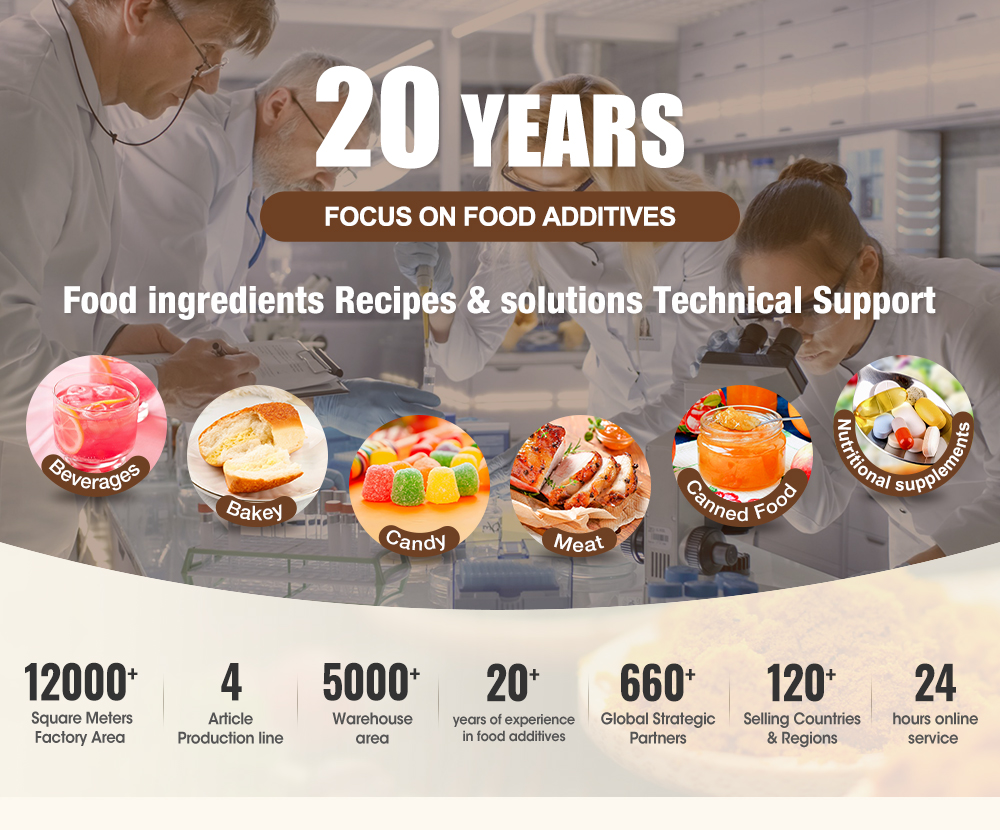
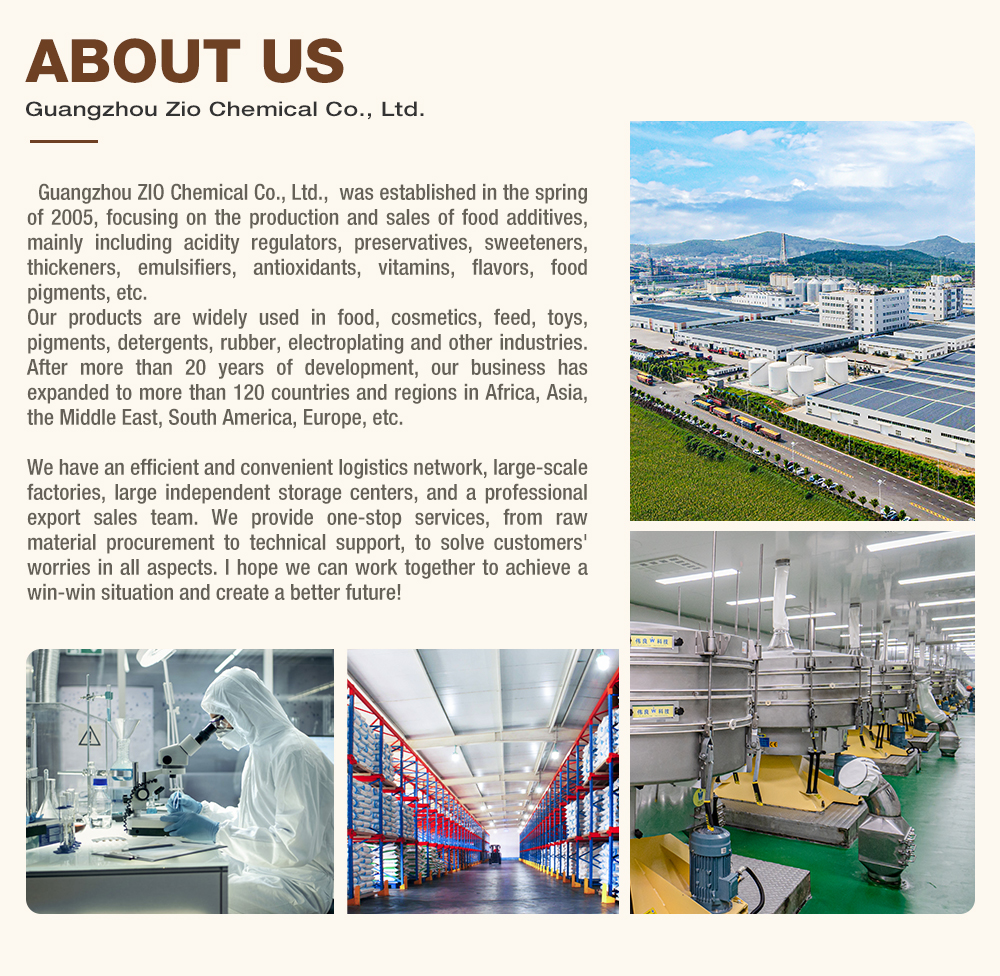
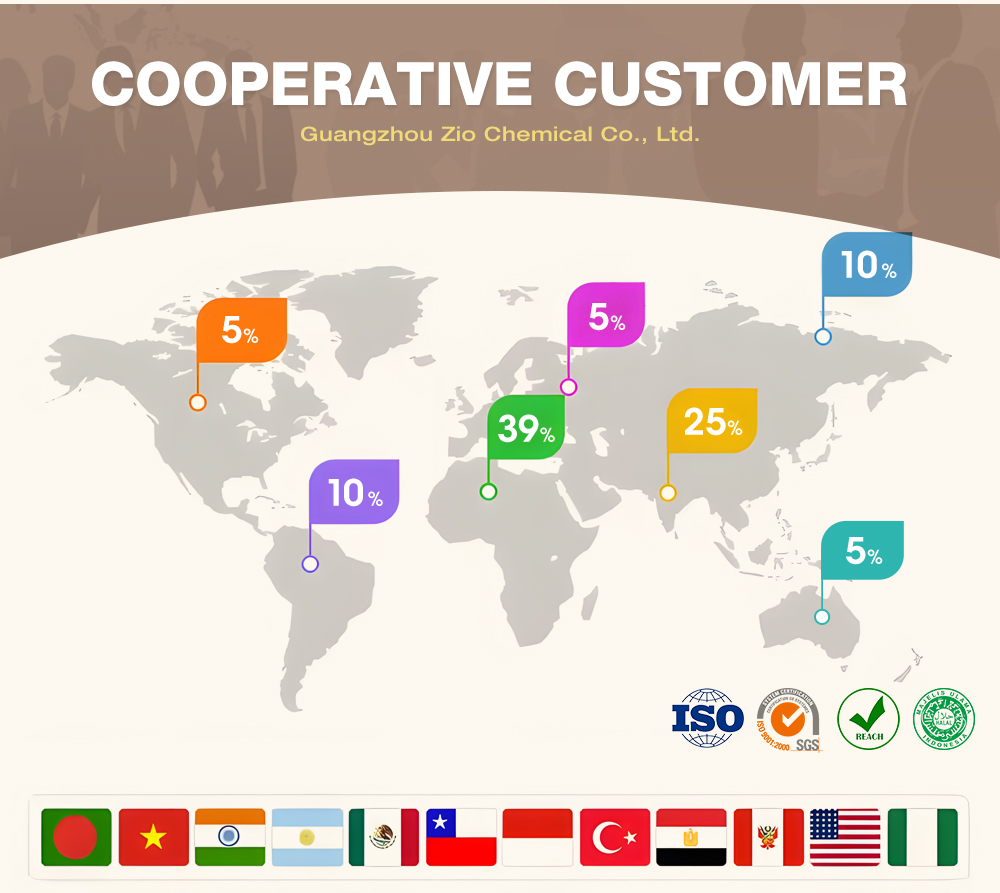

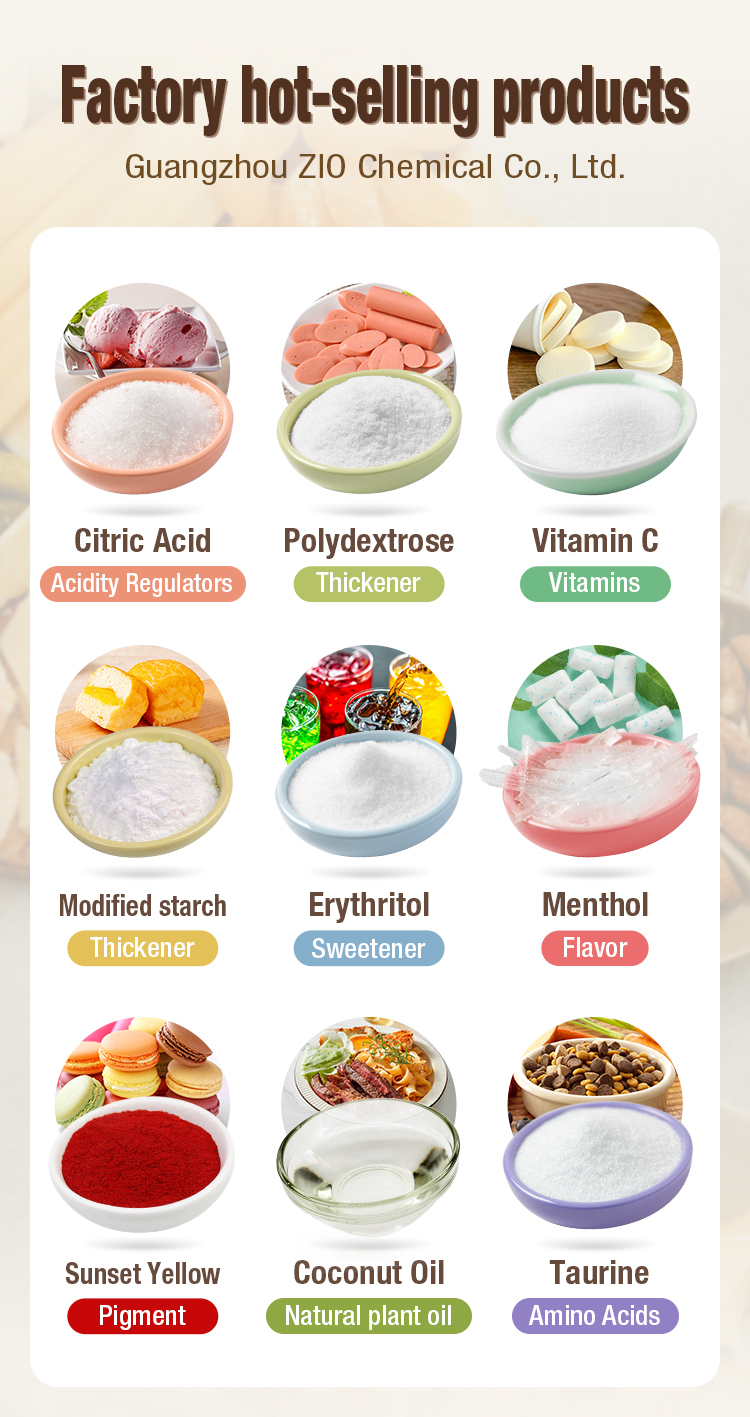


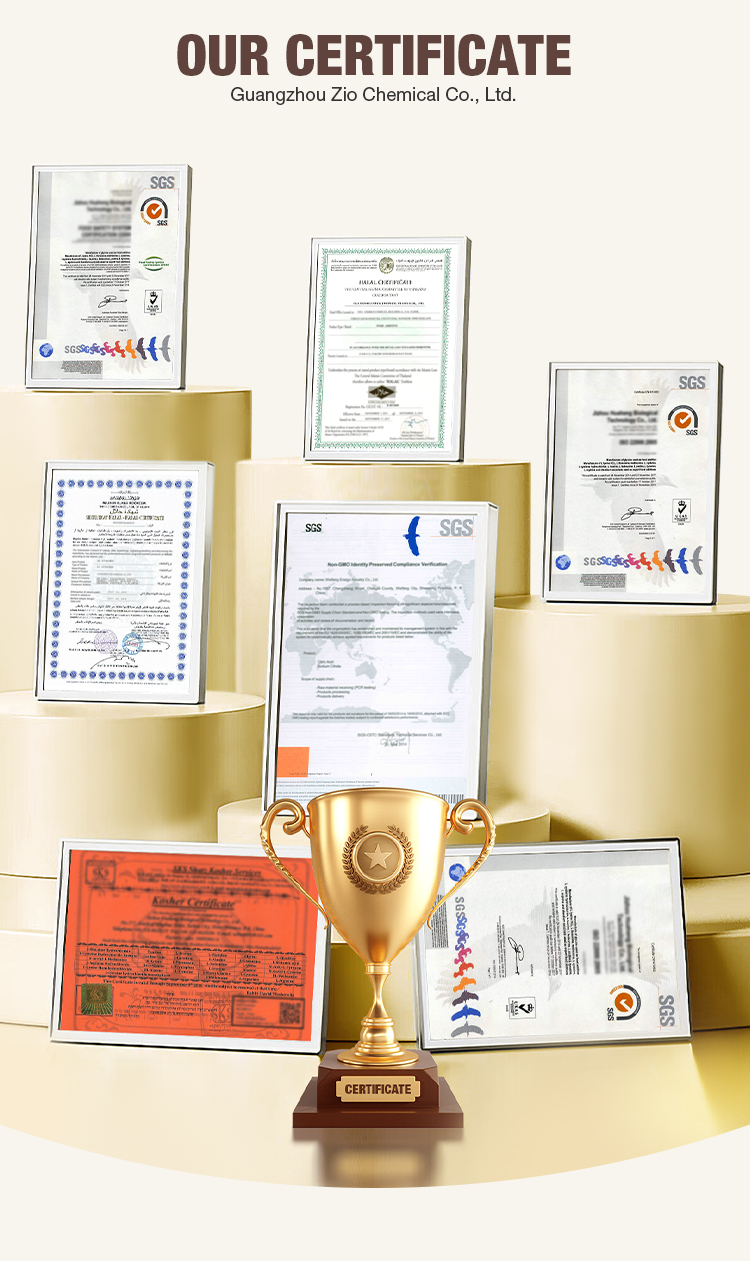




Natural Flavor:
Malic acid is derived from fruits, providing a natural tartness that enhances food flavor.
Preservative Qualities:
It helps in maintaining food freshness by regulating pH and inhibiting microbial growth.
Versatile Use:
Malic acid is suitable for a wide range of food products, including beverages, confectioneries, and dairy items.











